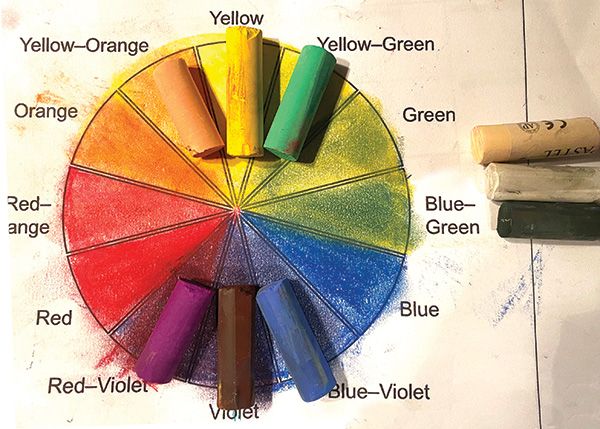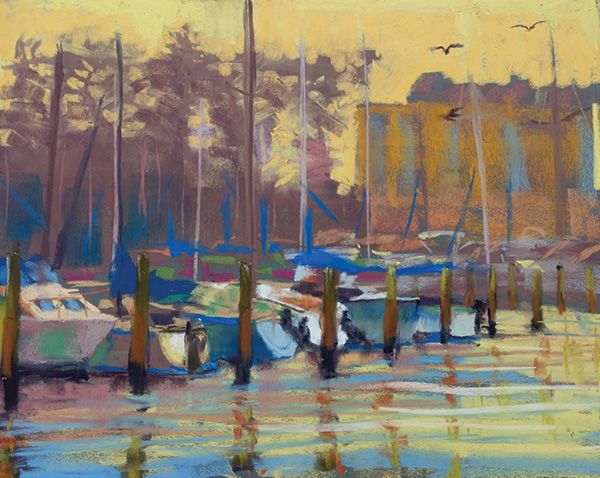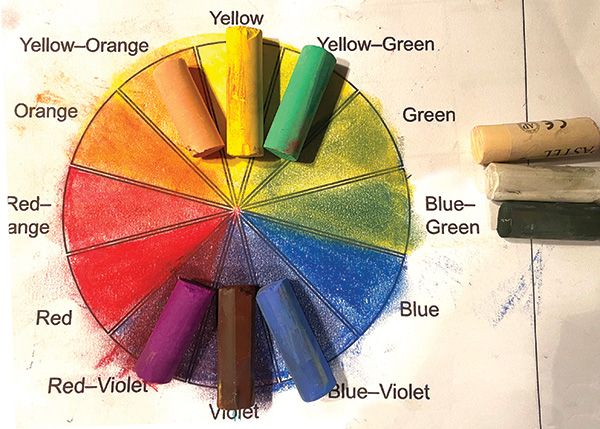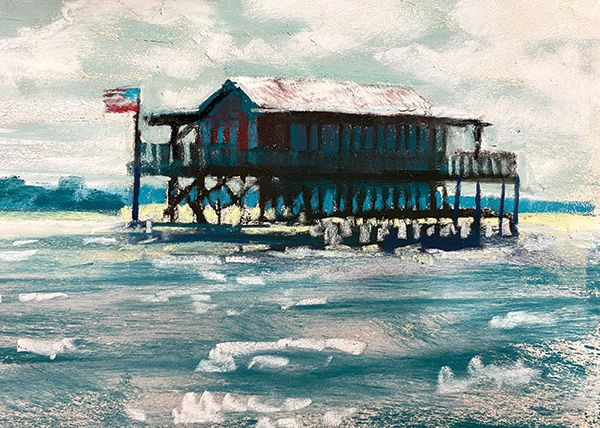
Complements of the Artist | Artists Network
Build visual affect and coloration harmony with a palette of Complementary Colours.
Complementary colors—the hues specifically opposite just about every other on the shade wheel— are eye sweet. The eye delights in these coloration mixtures and dances back again forth with gleeful abandon alongside the edges where by complementary colours fulfill.
Test this experiment. Stare at the graphic of an apple (beneath) for a excellent 30 or 40 seconds. Seriously burn it into your mind. Then move your eyes and stare at the blank area beside the apple. An afterimage of a environmentally friendly or blue-environmentally friendly apple will surface. This happens for the reason that, as you stare at the apple, the rods and cones in your eyes turn out to be saturated by the red of the apple and begin to adjust. When you glimpse absent from the apple, the retinal effect persists, but the eye, getting turn out to be less sensitive to the pink light, sees additional of the environmentally friendly or bluish inexperienced mild in the afterimage.


This is also why you could have discovered a environmentally friendly flash when the solar sets. As the sunshine dips very low in the sky, it turns reddish orange in advance of vanish-ing down below the horizon. The and cones in your eyes come to be overloaded with the rigorous reds, which may possibly bring about you to see a gleam of green when the sunlight disappears. Human eyes are geared towards complementary colours, so they’re captivated to a painting that skillfully takes advantage of them to build color harmony.

Complementary Palettes
I learned about the electric power of enhances from the e book The Yin/Yang of Portray, by Hongnian Zhang and Lois Wooley, each of whom taught classes in New York. Their e-book describes a palette based mostly on complementary hues furthermore hotter, cooler and neutralized versions of individuals hues. Zhang takes advantage of oil paints in the book, but Wooley’s do the job displays how quickly the principles can be tailored to pastel.
To build a complementary palette, commence with two complementary shades. Then insert a warmer and a cooler variation of each of all those colours. On the colour wheel, these additional shades are found on either facet of your authentic complementary-color pairing.
For example, a yellow/purple palette would include things like the correct main yellow plus a hotter (yellow-orange) and cooler (yellow-environmentally friendly) edition of yellow. I may possibly also incorporate yellow ochre and umber as yellows. On the purple side, I would use true violet, furthermore a warmer edition (crimson-violet) and a cooler edition (blue-violet). I could also use black and white to tint (lighten) and tone (darken) the shades. (See Yellow/Purple Complementary Palette)
“Even including just a touch of complementary shade into a painting will make it pop visually.”
Neutrals
You add neutrals to a complementary palette by combining complementary colors. For example, when you combine yellow with purple, you get mud—a neutral. All neutrals appear from mixing enhances, but if you change the proportions of the enhances, you get an assortment of neutrals that are significantly a lot more attention-grabbing than any other colour in your pastel box. What is far more, these neutrals tie the enhances collectively, developing shade harmony. (See Complementary Neutrals)
Neutrals also present off the high-chroma colours. If every thing has the same shade depth, your eyes modify, and shade does not stand out. Set a large-chroma color versus a neutral, and it pops. Hudson River College artists were very well recognised for having benefit of this phenomenon, as evidenced by Sunrise, by Frederic Church.

Complementary Neutrals
These 3 tables show the assortment of neutrals that can be made by modifying the proportions of complementary colors. Firming with black or tinting with white even further provides to the choices. Note the attractive neutrals in every single desk. The moment you study to mix neutrals, you will under no circumstances use a brown pastel all over again. What is additional, simply because the enhances and their neutrals comprise the exact part colors, they all harmonize.
Chromatic Scale Yellow/Violet

Chromatic Scale Orange/Blue

Chromatic Scale Crimson/Inexperienced

Selecting Enhances
I’ll generally do reports working with distinct complementary palettes to make your mind up which palette functions ideal for a final composition. These studies are all manufactured utilizing only the enhances in addition hotter and cooler versions. The complements are usually layered or blended to produce the neutrals, ensuing in coloration harmony.

To make a coloration analyze, commence with a benefit sketch or a black-and-white reference image. This retains you from getting overly motivated by the normal shade of the scene. Upcoming, use a coloration wheel to aid you find pastels. Opt for two complements and increase hotter and cooler versions of each. As soon as you’ve picked the six pastels, develop a shade review. Add black and white to tone and tint the shades, as necessary, but really don’t include other colors.
Repeat this method, starting off with a distinctive pair of complementary colours. Right after generating two or a few scientific tests, find the color palette you favor for your portray. (See Choose Your Enhances)
Pick Your Enhances

I designed a few color research to identify the greatest palette for a painting of a Gulf Coast stilt household. I based mostly the experiments on a black-and-white photograph, which served as a reference for the composition and values with out influencing my colour options. Which palette would you decide on?
Yellow/Purple Complementary Palette and Corresponding Coloration Review


Orange/Blue Complementary Palette and Corresponding Coloration Analyze


Crimson/Green Complementary Palette and Corresponding Colour Analyze


“Human eyes are geared towards complementary colors and are captivated to any portray that skillfully utilizes them to produce coloration harmony.”
The Payoff
Quite a few amateur pastelists make the blunder of using each individual colour in the box on a one portray or of failing to develop up color by layering and neutralizing. The extra you study coloration theory and integrate it into your artwork apply, the a lot more interesting your paintings come to be. Even including just a contact of complementary coloration into a portray will make it pop visually. What’s much more, developing neutrals from your enhances makes coloration harmony—and coloration harmony makes a calming and soothing impact in viewers, as does utilizing a mixture of neutrals and superior-chroma hues.
If you use shade wisely, your viewers will be drawn to your paintings with out recognizing why. You’ll listen to remarks like, “There’s a thing about this portray that I just really like!”
Satisfy the Artist: Shawn Dell Joyce
Shawn Dell Joyce (shawndelljoyce.com) is a Florida-centered plein air teacher and the founder of the WallKill River School of Art, in New York. Her do the job has been featured in a number of publications and is represented in galleries throughout the United States.
